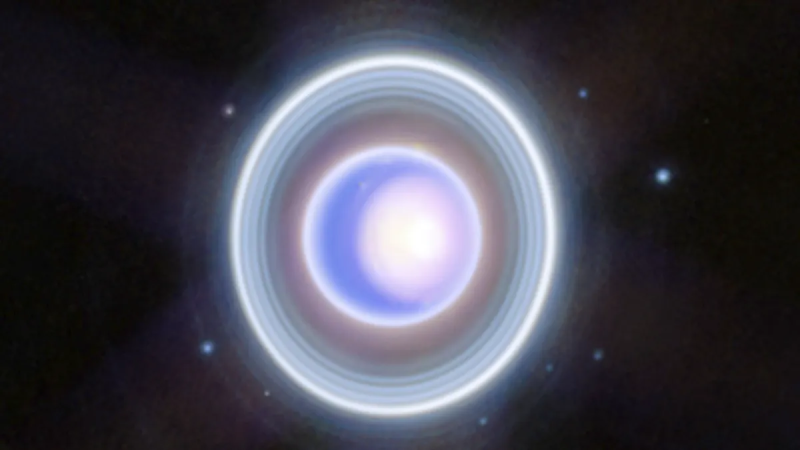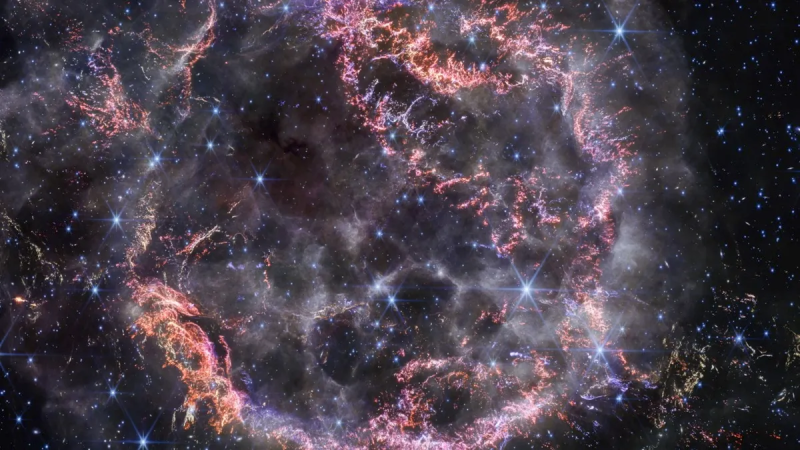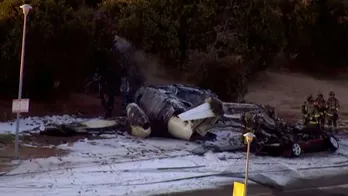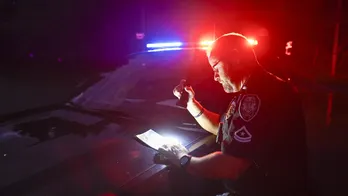NASA releases new images of Uranus, capturing glimpse of rare, seasonal feature
NASA released new images of Uranus that caught a rare feature on one of the solar system's most distant planets.
The James Webb Space Telescope's images show Uranus' rings, moons and storms in detail, including a glimpse of the seasonal north polar cloud cap, NASA announced Monday. The rare feature could be faintly seen in images released earlier this year, but the newest pictures using the telescope's Near-Infrared Camera (NIRCam) captured high-quality details showing the bright white inner cap and the dark lane at the bottom of the polar cap.
The telescope's high-resolution images also show Uranus’ faint inner and outer rings, as well as the one closest to the planet, the "elusive" Zeta ring, NASA said. The images also capture the planet's 27 known moons and a few smaller moons within the rings.

NASA releases new images of Uranus taken from the James Webb Space Telescope's NIRCam showing a rare, seasonal feature in clear detail. (NASA, ESA, CSA, STScI)
HOW ASTRONAUTS ON THE ISS ARE TACKLING THE LATEST ‘UNEXPECTED CHALLENGES’ MILES ABOVE THE EARTH
Highly-technical equipment introduced over the years has allowed researchers to make significant advancements. In the 1980s, for example, Uranus appeared as a "placid, solid blue ball," according to NASA. But today, high-definition cameras that use infrared wavelengths can capture the faintest details of the "strange, dynamic ice world."
Also using NIRCam, JWST recently captured a high-definition image of supernova wreckage that was displayed in the White House's first Advent calendar. The image showed the Cassiopeia A (Cas A) supernova remnant, featuring details of the "expanding shell of material slamming into the gas shed by the star before it exploded," NASA announced Dec. 10.

A high-definition image from the James Webb Space Telescope's NIRCam is included in the White House's first-ever Advent calendar as part of its 2023 Christmas display. (NASA, ESA, CSA, STScI, Danny Milisavljevic (Purdue University), Ilse De Looze (UGent), Tea Temim (Princeton University))
INTERNATIONAL SPACE STATION ASTRONAUTS REDEFINE ‘THE RIGHT STUFF’ FOR THE MODERN ERA
"[W]e can now see how the dying star absolutely shattered when it exploded, leaving filaments akin to tiny shards of glass behind," said Purdue University Associate Professor of Physics and Astronomy Danny Milisavljevic, who leads the JWST research team. "It’s really unbelievable after all these years studying Cas A to now resolve those details, which are providing us with transformational insight into how this star exploded."
President Biden revealed the first JWST image in July 2022, giving a brief look into the various galaxies of the vast universe. The $10 billion device launched in December 2021, but took another six months to become fully operational.
ASTRONAUTS DESCRIBE HOW COMMERCIAL SPACE TRAVEL IMPACTS MOON AND MARS MISSIONS:
CLICK HERE TO GET THE FOX NEWS APP
"This telescope embodies how America will lead the world, not by the example of our power, but by the power of our example," Biden said.
Click here to see more JWST images.
Disclaimer: The copyright of this article belongs to the original author. Reposting this article is solely for the purpose of information dissemination and does not constitute any investment advice. If there is any infringement, please contact us immediately. We will make corrections or deletions as necessary. Thank you.







